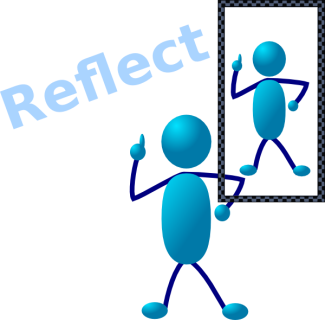I have learned a tremendous amount of information in the Distance Learning EDUC 6135. I  reflect on this course and realize that distance learning means so much more than I thought. Distance education is defined as “institution-based, formal education where the learning group is separated, and where interactive telecommunications systems are used to connect learners, resources, and instructors” (Schlosser & Simonson, 2010, p. 1). The composition of distance learning has been further described by Simonson, Smaldino, and Zvacek (2015) as four interrelated parts which are institutionally based with time and geographical separation between the teacher and student. There is interaction via synchronous and/or asynchronous communications and the sharing resources among the learning community (Simonson, Smaldino, & Zvacek, 2015). Distance learning will be the standard for many students in the next 10-20 years in my opinion. This will hold true particularly for students who are wanting to pursue their education while continuing to working full-time.
reflect on this course and realize that distance learning means so much more than I thought. Distance education is defined as “institution-based, formal education where the learning group is separated, and where interactive telecommunications systems are used to connect learners, resources, and instructors” (Schlosser & Simonson, 2010, p. 1). The composition of distance learning has been further described by Simonson, Smaldino, and Zvacek (2015) as four interrelated parts which are institutionally based with time and geographical separation between the teacher and student. There is interaction via synchronous and/or asynchronous communications and the sharing resources among the learning community (Simonson, Smaldino, & Zvacek, 2015). Distance learning will be the standard for many students in the next 10-20 years in my opinion. This will hold true particularly for students who are wanting to pursue their education while continuing to working full-time.
Future of Distance Learning
 As I continue to reflect on the future of distance learning I realize that it is not going to decline. As a matter of fact, distance learning will likely continue increase in acceptance and make education more widespread than ever before (Kennedy, S. 2017). In terms of the future of distance learning, it’s vital to a good understanding of the growth and progress thus far. According to Saad, Busteed, and Ogisi (2013), 5% of all adults in the U.S. are currently taking an online course. Because online courses and degrees present an enormous possibility for expanding access to college, this 5% is sure to rise. Due the accessibility and flexibility of distance learning, working individuals will have greater opportunities for higher education. In the near-term it is predicted that fewer and fewer students will be pursuing traditional on-campus degrees (Kennedy, S. 2017). As we move forward, more students will choose fully online or blended learning degree programs. As distance learning continues to gain authority and respect, the enrollment in distance learning programs will continue to grow.
As I continue to reflect on the future of distance learning I realize that it is not going to decline. As a matter of fact, distance learning will likely continue increase in acceptance and make education more widespread than ever before (Kennedy, S. 2017). In terms of the future of distance learning, it’s vital to a good understanding of the growth and progress thus far. According to Saad, Busteed, and Ogisi (2013), 5% of all adults in the U.S. are currently taking an online course. Because online courses and degrees present an enormous possibility for expanding access to college, this 5% is sure to rise. Due the accessibility and flexibility of distance learning, working individuals will have greater opportunities for higher education. In the near-term it is predicted that fewer and fewer students will be pursuing traditional on-campus degrees (Kennedy, S. 2017). As we move forward, more students will choose fully online or blended learning degree programs. As distance learning continues to gain authority and respect, the enrollment in distance learning programs will continue to grow.
Improving Societal Perceptions of Distance Learning
As instructional designer, I would be able to play a significant role in improving societal perceptions regarding online learning. Sharing information about it is the first step in the process of improving perceptions of distance learning. The more information shared to alleviate misconceptions and answer questions, the greater the societal appreciation for online learning and the better employer acceptance of online education will be (Saad, Busteed, & Ogisi, 2013). Another significant means of enhancing public perceptions is to recommend valid course design and delivery methods. As an instructional designer it will also be important that I keep up to date on issues and new technologies in my field. Staying up to date on new and emerging technologies in my field will enable me to provide detailed information to perspective learner as well as others in the hope changing any negative perceptions. Most importantly, as a designer I would develop engaging courses that are student centered, not instructor centered (Simonson, Smaldino, & Zvacek, 2015).
The university experience will likely be very different by the year 2020. Higher education will continue to increase the number of online courses being delivered. As move into the future, there will be more and more students who either prefer to or have work while attending school. Having the ability to attend distance learning course will help them to achieve this. I will continue to keep abreast of the new distance learning technology and opportunities as we move into the future. I do not know exactly what the technological future holds, but I do know that there will continue to be a need for high quality learning and training at a distance for busy professional, adult learners. As a result, I will continuously improve my skills so that I can design courses that will provide quality-learning experiences.

References
Kennedy, S. (2017). Future of Distance Learning. Retrieved from http://www.distancelearning.org/future-of-distance-learning/
Saad, L., Busteed, B., & Ogisi, M. (2013). In U.S., Online Education Rated Best for Value and Options. Retrieved from http://www.gallup.com/poll/165425/online-education-rated-best-value-options.aspx
Schlosser, L.A., & Simonson, M. R. (2010). Distance Education: Definitions and glossary of terms, 3rd edition. Charlotte, NC: Information Age Publishing, Inc.
Simonson, M., Smaldino, S., & Zvacek, S. (2015). Teaching and learning at a distance: Foundations of distance education. Charlotte, NC: Information Age Publishing, Inc.